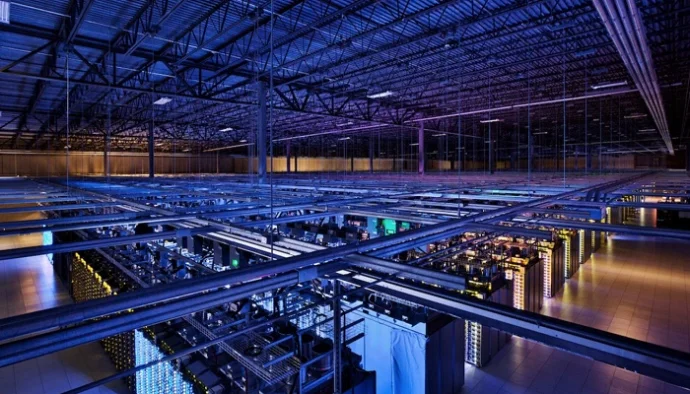A Checklist For Data Centre Cloud and Facility Migrations
The data centre and server room market continue to evolve and embrace new technologies. The introduction of virtualisation allowed some organisations to downsize their hardware space requirements whilst increasing power densities. What will the effect of 5G and Edge technologies be?
At Server Room Environments we are seeing a shift into two camps for growing companies and organisations. On the one hand strategies are being deployed to optimise on-premise facilities whilst also embracing Cloud services. This will continue to evolve over the next 5-10 years to meet growth expectations but also to balance potential risks for data integrity and threats from cybersecurity. For other facilities, there is a need to completely relocate existing services where there is physical space of infrastructure capacity restrictions. So how do you manage a data centre facility or server room service migration?
The Data Centre Migration Checklist
Most migrations can be covered by a general checklist along with a site-specific risk assess and method statement
(RAMS) document. Our projects team use this to review the migration plan with on-site personnel and necessary specialist sub-contractors as required. Our checklist includes the following steps:
- Discovery and Outline Plan: the first stage in any data centre or service migration is to outline and document the actual change. This is just good practice whether it is a move, change or upgrade to an existing installation. The 5Ws and H provides a useful model to check the various aspects at this stage of the project in terms of Who, What, Where, When, Why and how. It is important to set a date and time for the change and then to work back along a time plan and critical path to identify the necessary activities and stakeholders. Above all it is important to appoint a migration team and overall project manager who can be an external consultant or person within the organisation. The actual plan can go through several iterations and risk analysis before sign-off and movement into the implementation phase.
- Plan Development: with authorisations, budgets and timescales accepted it is time to begin a more detail phase. During the early part of this phase it is important to maintain clear communications and reporting lines with all the stakeholders and personnel involved. There could be regular briefings, workshops and training sessions of a general outline or detailed nature that could involves different operations within the business or organisation, their teams, suppliers, sub-contractors and end-users. The information that should communicated includes the entire scale of the project, resources required, timescales, power-down and commissioning phases and steps, as well as test and proving with any concerns covered.
- Operational Audits: whether migrating part of a small server room operation to the cloud or a data centre to a new facility, the auditing stage should be thorough. The audit should cover assets, systems, software and data practices and procedures. Once complete the migration lead to new practices and procedures which should be documented, and people trained on them prior to the move. Sometimes it is the simple things that can prevent a migration such as permits or once decommissioned, a rack layout, cable summary and network connectivity diagram from which to make-good a new installation.
- Critical Infrastructure: it is always best practice to maintain or improve resilience as part of a migration project. The new environment must be as or more secure than the existing service in order to support growth unless part of a cost-cutting exercise. This phase should consider, power and cooling, connectivity, cabling and network structures in terms of copper and fibre, speeds and capacity.
- Backups and Health Checks: off course no migration should take place without a set of solid backups of the current data environment. This could include tape, disk and Cloud backups to ensure that operating environments can be replicated. As part of this phase it is also important to audit and HealthCheck backup procedures and practices to ensure there are no errors or system faults that could impact the migration. The most likely time for a piece of electronic hardware to fail is during a reboot phase. That’s part of the ‘bathtub’ curve effect we all experience from time to time when turning on a light switch and a bulb going that has been ‘so reliable’ in the past.
- Virtual Server Room Migrations: virtual migrations can be easier than hardware based ones. When selecting to run from a Cloud provider under a Software as a Service (SaaS) provision, the onus for security and resilience lies with the Cloud provider. However, the client organisation still has a responsibility to review their own business continuity and disaster recovery plan. A virtual environment can also be used an interim migration solution, with the onsite live production environment migrating to cloud ahead of the physical move. Once the cloud production site is operational, this can provide time for decommissioning the original site and the powering up and testing of the new site. Once operational, the Cloud operation can be moved back to the new site with the to maintain the Cloud as a part of the disaster recovery (DR) Plan.
- Physical Data Centre Relocations: for a physical move, ‘best practice’ can include a test-move to prove the concept and capability before the full migration. A physical migration is more demanding and could also provide an opportunity for system upgrade, refresh and decommissioning, leading to a more energy efficient environment and one with more capacity for the years ahead. Additional considerations for a physical migration should cover insurances (of both premises and equipment during transit) as well double billing for space and utilities services as well as personnel and overtime. All should be included within the budget as well as a contingency factor. Even with a solid approach to a server service or complete data centre migration, there can and will almost inevitably be some unplanned for events and outcomes. A contingency factor in the budget in terms of money and time provides a provision for unexpected issues.
- Testing and Proving: the final step for a virtual or physical migration is the testing and proving phase. This will include commissioning and site acceptance testing as well as the proving of procedures and practices, including backups within the new facility. Some organisations may decide to maintain both the new and existing physical sites for a period to cover operational resilience.
Summary
Any server or data centre migration is one that can disrupt the existing IT operation. A well-planned migration can help to mitigate risks and prevent disruption through parallel running until the new service or facility is fully operational. The discovery and planning stages are key and should involve the key stakeholders both within the company and its wider domain to ensure all aspects are covered and risks mitigated for. As hyperscale operators like Amazon AWS, Google Cloud and Microsoft Azure continue to develop the speed and capacity at which they can roll out Cloud services we expect a greater number of organisations to take advantage of these types of facilities whilst also improving their own infrastructures. This allows them to balance off risk and reward and deliver the most appropriate IT services to their users.

























